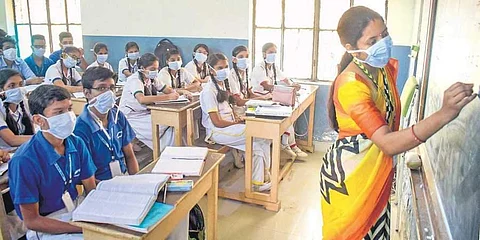

In any merger, the biggest challenge is always the integration of human resources because the people who are coming in have a lot of apprehensions Arundhati Bhattacharya (b 1956), former Chairman of State Bank of India – the first woman to hold that post
Mergers have been the hallmark of the banking scene in India and historically State Bank of India has been at the forefront of mergers and acquisitions. The main issue here is handling human resources.
Now, the same route is being thought of in the case of schools. One of the latest articulation on the subject – incisive, persuasive and statistically well-supported – comes in an article by Sarah Iype, working on education policy in NITI Aayog, titled “The curious case for consolidating schools”, published in The New Indian Express (6/7/20) and excerpted here.
According to Sarah, state education departments have an opportunity to catalyse systemic transformation through school consolidation. She says India has far too many schools, reflecting inefficient resource allocation. With over 15 lakh schools and 25 crore students, the average Indian school has six teachers, 160 students and a healthy pupil-teacher ratio (PTR) of 27:1. The flaw in an analysis of averages, however, lies in the disparities it hides. For example, the maximum variation in PTR is seen between states not too far apart — under 9 in Sikkim to over 42 in Bihar. In terms of proportions, regional differences bring up interesting revelations. Home to 10% of India’s students, Bihar has less than 6% of the country’s schools, while Assam has almost twice the proportion of schools vs students.
With 18% of the nation’s school-going population, Uttar Pradesh has less than 14% of India’s teachers. The average number of students per school varies from 65 in Meghalaya to over 1,000 in Chandigarh. There is an 11-times difference in the range of teachers per school between Meghalaya (4) and Chandigarh (44).
The erudite author discusses the subject comprehensively with convincing statistical back-up. But for reasons of space, I will only cite part of the chain of challenges she has noted: “Too many schools, too few students and inadequately distributed teachers lead to widespread multi-grade multi-level learning. This gets exacerbated in single-teacher schools where for instance, one teacher has to simultaneously teach children from Classes 1 to 8.”
Sarah concludes that the scars of an inefficient system must be undone by creating well-equipped schools that deliver quality education for every child.
